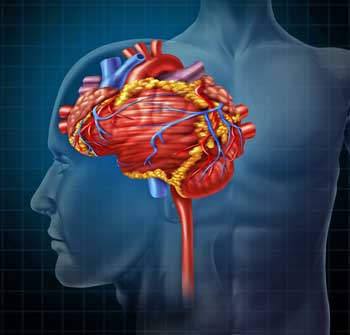



We are at the tipping point in our scientific pursuit to identify the biomarkers and central abnormalities of ME/CFS. Several treatment interventions will stem from our work and that of other institutions. We believe that by applying the appropriate methodology and technology, we will be able to conquer and defeat ME/CFS within our lifetime. The Stanford ME/CFS Initiative
A Big Year for the Stanford ME/CFS Initiative
The Stanford Chronic Fatigue Initiative’s spring newsletter indicates that the next year is going to be a critical one for Montoya’s ambitious, multifaceted program. Five years ago an anonymous donor put enough rocket fuel (reportedly $5 million) into it, to run a greatly expanded program. Montoya took advantage of the opportunity to examine multiple areas of the body (immune system, heart, brain) and to fill up a large biobank (200 patients).

An anonymous donor put some rocket fuel into Montoya’s program. The next year should tell us much about how successful it’s been.
The five years of support is up, though. It was surely intended to get the ball rolling at Stanford – to initiate a stream of pilot and major studies that ultimately got translated into grants. The big question facing the program is whether it has.
Five years later, the Stanford program has not exactly been a publication machine. About five papers have been published over the last couple of years: two on HHV-6 and one each on valganciclovir, brain imaging and Younger’s Good Day/Bad Day leptin study. Two of those appear to be directly related to the Stanford CFI.
Two bonified successes have emerged, though. The small but extraordinary Zeineh brain imaging study zeroed in like a precision microscope, on a small part of the brain, giving Zeineh an excellent chance at getting a large followup NIH grant. Younger’s Good Day/Bad Day leptin study was rewarded with a major NIH grant. Younger, however, is now running his own Pain and Fatigue lab at the University of Alabama at Birmingham. Still, it was a notable success.
With the NIH’s big studies typically running into the millions of dollars, two big grants (if they both come) might be considered a decent return on investment, but there’s much more to come. It looks like this is going to be the year the Stanford program publishes and publishes. According to the newsletter at least six and probably more papers are slated to come out over the next six months to a year.
- Total number of studies completed – 8?
- Papers published – 2
- Data analysis of study finishing up – 2
- Manuscripts being written up – 3
- Manuscripts currently under review – 1 (2?)
Montoya needs to keep showing results, publishing studies and turning them into grants. Let’s see what’s coming up.
Current Studies
Something Very Different – Exciting Pathogen Results
Talk about a shocker. The pathogen results from two recent efforts: the Lipkin-Hornig CFI study and the Solve ME/CFS Blood Safety Research study came up negative. The one positive sign on the pathogen end has been the German EBV study suggesting high rates of active EBV infection were present.
Dr. Montoya is reporting he’s found “exciting evidence” of pathogens, and he’s found it in partnership with Ian Lipkin and Mady Hornig no less – the co-authors of the study that seemed to put the kobosh on pathogens in ME/CFS.
Several doctors, researchers and advocates questioned whether that study was sensitive enough to pick up the kind of “smoldering” herpesvirus infections they believe are present in ME/CFS. Reports floated around that the Lipkin/Hornig team were digging back into their samples. Now it appears that they’ve found something – and something exciting.
In his recent CDC talk Dr. Montoya alluded to new forms of herpesviruses he expected be unveiled in the upcoming years. This is probably not that, but a renewed interest in pathogens appears to be present.
Montoya plans to follow the recent study up with a “Universal Pathogen” study that will look deeper into the body than anyone ever has before. More than a fishing expedition, the study is based on preliminary results from his GEISD-Pathogen Discovery work. It will survey the cerebral spinal fluid, lymph nodes, gut, bone marrow and natural killer cells. With the Chronic Fatigue Initiative collecting and looking in the saliva (thanks to the Microbiome Project), the CSF, the feces, the tears and urine (?) most of the important compartments of the body compartments are being covered.
The Heart – No! The Cardiovascular System – Yes
Dr. Haddad found no evidence of heart problems in ME/CFS patients. That was probably not unexpected. Ron Davis has pointed, out though, that a negative result is not necessarily a bad thing. A negative result – one that you can count on- allows you to check a possibility off of your list – and move onto the next thing. I think we can count on Dr. Haddad, and he has indeed moved onto the next thing: endothelial functioning and cytokine levels before and after exercise.
Blood vessel functioning is such a potentially hot topic in these disorders that thinking about it makes my heart race. Problems with blood vessel functioning could, of course, impair blood flow to all parts of the body. They could also easily impact oxidative stress and inflammation.
Dr. Julia Newton, Dr’s Fluge and Mella in Norway, the folks at MERUK in the UK, and now Dr. Haddad at Stanford are all interested in this area. Fluge and Mella have gone so far as to place a endothelial substudy inside their Rituximab study. We can expect a hypothesis paper from them on this subject soon.
The Zinn’s Studies
Montoya’s failure to mention the Zinn’s studies in the CDC call was worrisome given the exciting presentation the Zinn’s gave at the Stanford Symposium. The Zinn’s findings suggested that a ‘limbic encephalitis’ stretching down to the brainstem resulting in central nervous system “hypoactivation”. Looking at their findings one of the Zinn’s exclaimed “that’s a lot of brain”.
The Zinn studies are included in this newsletter, and it turns out that they are the closest of any to publication – a paper is under review.
The Immune Studies
Immune I – The big Mark Davis Immune Study – is finishing up and they’re working on the analysis now. Montoya must have thrown an enormous amount of money at Davis’s big 600 person study. According to past reports it took them a year to simply get the samples tested. Dr. Montoya has stated that this study – the largest ever done in ME/CFS – will provide a comprehensive view of the immune system of ME/CFS.
Davis has found several cytokines, chemokines, and cell factors are clearly correlated with symptom severity in ME/CFS. The gene expression portion – which involved 25 million data points – indicated that ME/CFS most closely resembles Systemic Inflammatory Response Syndrome (SIRS). With the Lipkin/Hornig CFI immune study coming up big, the immune system, after a flurry of variable findings, appears to be back on the front burner.
Immune II – Montoya has received funds from one outside funding source: a Department of Defense grant examining immune responses and a study examining the HLA regions of our DNA that are responsible for spotting pathogens.
Future Endeavors
There’s no word yet on whether the anonymous donor is going to re-up his contribution but a large slate of studies are in the planning stages.
- Lyme Study – a major Lyme biomarker study involving Mark Davis and physicians from inside and outside Stanford should begin shortly (late spring).
- Universal ME/CFS Pathogen Study (see above) – “This study will be the first comprehensive effort to search for pathogens in sites never attempted before.”
- Neuroendocrine HPA Axis study – to begin hopefully in summer, 2015.
- Homebound ME/CFS Study – to address the needs of the severely ill. Projected start date – Fall 2015.
- Mitochondrial Analysis? – Montoya retained samples from patients in the Synergy mitochondrial booster trial. The methylphenidate/mitochondrial supplement trial was successful in several senses – it boosted functioning far beyond that of an earlier methylphenidate trial and side effects were minimal. The treatment effects did not, however, reach significance relative to the placebo response. Given these conflicting findings it’s not clear what Montoya is going to do; in the newsletter he said they are “looking at” conducting
Conclusion
With some big studies coming out, the next year will be important both for the Stanford ME/CFS Initiative and for an ME/CFS community which has rarely, if ever, had access to these kinds of resources before. The results of the big 600 person immune study will be particularly revealing, but the Zinn’s brain study, the endothelial/cytokine exercise study, and now, out of the blue, the “exciting” results from a pathogen study featuring one of the top pathogen hunters promise much.
Through the generosity of an anonymous donor at Stanford and the Hutchins Foundation at the CFI and other private sources, ME/CFS has finally been access to top researchers. With the IOM and P2P reports – which Montoya lauded – calling for more funding the field may indeed be reaching a tipping point – a point at which the federal government finally steps and does its share. The next year should tell us much.
- Event – Stanford ME/CFS Initiative Advisory Board Member Lily Chu M.D. talks on Post Exertional Malaise in the Solve ME/CFS Initiative’s webinar on June 18th.
- Donate to the Stanford ME/CFS Initiative here











Cort, the articles are not under review that we know of. This is news to us.
Marcie (and Mark) Zinn
Wow… What is the status of your papers at this point? I assume there are two of them?
Thanks, Cort – a very interesting perspective.
This is all sounding very promising. Looking forward to those publications!
Support for the Chronic Fatigue Initiative is from the Hutchins Foundation. Not “Hitchens” as you printed.
This is by far my most severe symptom. At it’s worst I feel like I have the flu combined with severe fatigue.
Don’t forget sore neck glands and not being able to ‘wake up’ all day.
bonified = bona fide? and not ossified, right?
The mitochondrial study sounds very interesting to me. I hope that makes progress.
Thanks for keeping up on all this research. I feel proud when I can read your articles and understand them. Gathering the information, writing it up clearly, beyond my ken these days.
Sarah
Bona fide, latin for good faith.
Bonified is a damn cute anglicisation though and I can’t believe it isn’t more common!
Thanks for all the hopeful information, Cort!
(and LOL about bonified)
I’m in my 29th year living with CFS. I never thought that there would be anyone that would come to our rescue. A feeling of hope is so important to us and this is almost like a dream come true. I only to be alive when they find a cure someday so that I can experience living a normal life if even for a year or two 🙂
Cliff
Cliff have you looked at LDN ( low dose Naltrexone? I’m still under 10 years and just started on LDN I don’t feel 100% but alot better. Check it out it may help you too.
Carmen